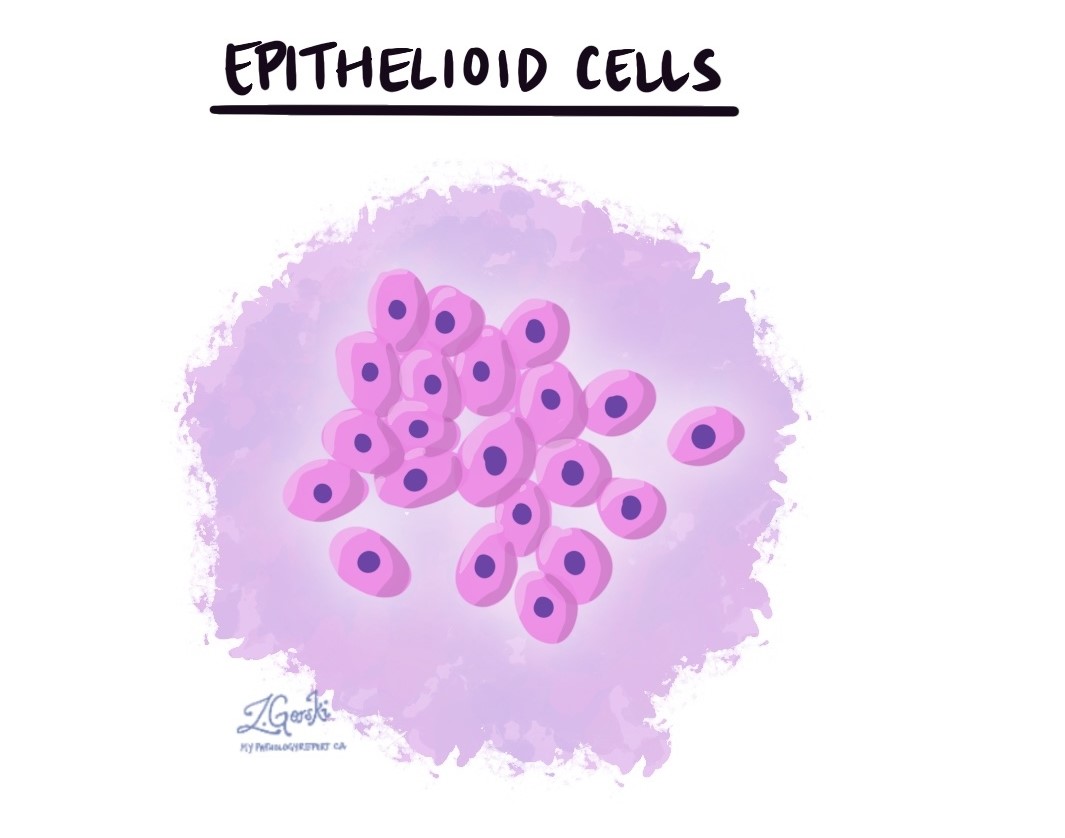December 1, 2023

In pathology, cells are described as epithelioid if they are round, have lots of cytoplasm (the material found inside the body of the cell), and have a round to oval-shaped nucleus (the part of the cell that holds the genetic material). They are called epithelioid because they look like epithelial cells – specialized cells found on the surface of the skin and inside organs throughout the body. Pathologists often perform additional tests such as immunohistochemistry to determine if these cells are true epithelial cells or if it is another type of cell that has changed in shape and size so that it now looks like an epithelial cell.
Are these cells cancerous?
Epithelioid cells are commonly found in tumours, however, not all of them are cancerous. Pathologists use additional information including the location of the tumour, the other types of cells found with the epithelioid cells, the presence of mitotic figures (cells dividing to create new cells), the presence of invasion (whether the cells are spreading into surrounding tissue), and the results of special tests such as immunohistochemistry to help them decide if the epithelioid cells are cancerous or not. Sarcoma and melanoma are two types of cancer that frequently show these types of cells even though they do not start from epithelial cells. Importantly, these cells can also be found in other types of conditions. For example, the epithelioid histiocytes in a type of inflammation called a granuloma are non-cancerous immune cells that are more round than normal histiocytes and connect like epithelial cells.
About this article
Doctors wrote this article to help you read and understand your pathology report. Contact us if you have questions about this article or your pathology report. For a complete introduction to your pathology report, read this article.

